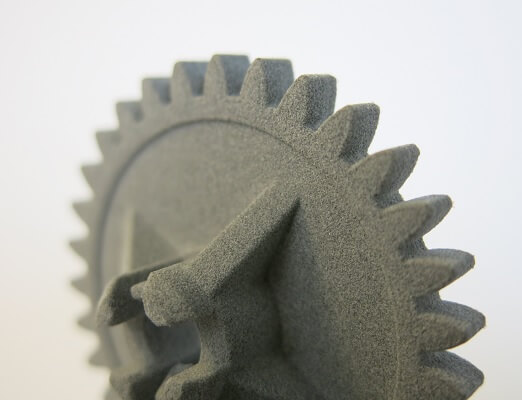If you have been searching for the best 3D printing technology available today, then you might have come across the terms SLA and SLS. This introductory guide will mainly focus on SLS printing.
What is SLS?
Selective Laser Sintering, an additive manufacturing technology that utilizes the use of a laser to sinter powered plastic material, turning it a solid structure using a 3D model, is a popular choice in product engineering for several decades now. If you see hand tools with plastic materials in them, this is most probably a product pf SLS technology. This technology is now available to many businesses, thanks to the advancement in machinery, software, and materials.

sls 3d printing*
A Brief History
SLS was developed in mid 1980s by Dr. Joe Beaman and Dr. Carl Deckard at the University of Texas in Austin. This was considered as one of the first additive manufacturing techniques. Since then, the SLS method has been used in different materials that include but is not limited to the following – ceramics, plastics, metals, glass, and varied composite materials. Today, such technologies are classified under one category – powder bed infusion – these are additive manufacturing processes where thermal energy is being used to fuse regions selectively in a powder-bed.
There are two most common powder bed fusion systems today. These are SLS which are plastic based and DMLS (Direct Metal Laser Sintering) which is also known as Selective-Laser-Melting (SLM). In the past, these systems have been considered complex and expensive, which limited their use in custom or high value parts like in medical devices or aerospace components. But, with the surge in innovation in the plastic based SLS, this is now following in the steps of fused deposition modeling (FDM) and stereolithography (SLA) as a technology of choice for compact systems.
How Does SLS Work?
The 3D printer makes use of a high power laser to bind small particles of polymer powder. The printing process starts with a thin layer placed on top of a platform, placing it inside the build chamber. This is then preheated by the printer, just below the melting point of the material. With this temperature condition, it is easier for the laser to target specific temperatures on specific regions of the powder, tracing the powder bed to solidify a part of it. Afterwards, the laser will scan a cross-section of the 3D model, while heating the powder to below or right at the melting point of the used material. This action fuses the particles, creating one solid part.
The powder that was unfused on the other hand will act as a support, which means that you no longer have a need for dedicated support structures. After which, the platform will lower by one layer on the build chamber where recoater will apply a new layer of powder at the top. Then, the laser will be scanning the next cross-section of the build. This is repeated until the part is complete. The operator waits for the parts to cool down before removing it from the build chamber where it will be transferred to a cleaning station and the printed parts are separated.
Why Opt To Go For SLS Printing?
It offers so many benefits.
- It offers design freedom.
With other additive manufacturing processes such as FDM and SLA, these require support structures when fabricating designs. In comparison, SLS will not need the use of support structure since there are already undesintered powder surrounding the parts at the time of printing. You have design freedom where the once impossible geometric designs are now made possible like for example parts with channels or interior components.
- It also offers high productivity output.
SLS is currently considered as the fastest additive manufacturing technology, great in producing durable and functional prototypes. The lasers used in the printing process have the capability to fuse the powder for great scanning speeds and these are considered more accurate that what is used in other processes such as industrial FDM.
- It is also possible to have multiple parts arranged while during the printing process, helping maximize the build for each of the machines.
The operators make use of software to help optimize the building of parts for better productivity in a way that there is minimal clearance in between parts.
- The materials used in SLS 3d printing are durable and functional at the same time.
This makes use of nylon and composites that offer high quality thermoplastics. The nylon parts in SLS printing offer 100% density and often comparable to the ones made through injection moulding. If you calculate the cost per part including cost of labor, we can say that SLS printing is very competitive.
Conclusion
SLS printing is one of the best solutions when it comes to engineering plastics. Parts made using this technology exhibit great mechanical properties not found in other printing technologies.
Reference
*Image from on https://www.sculpteo.com
